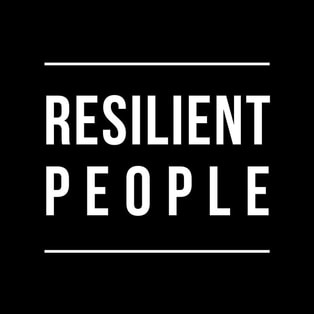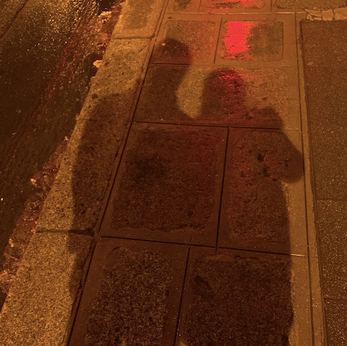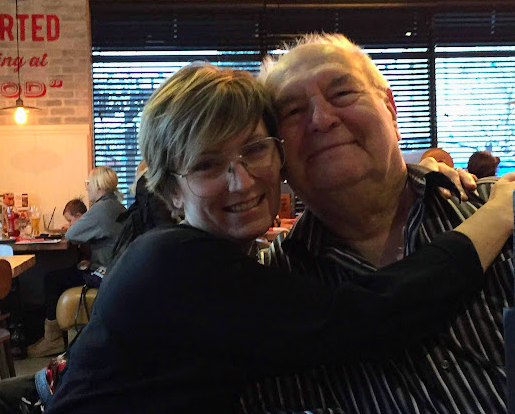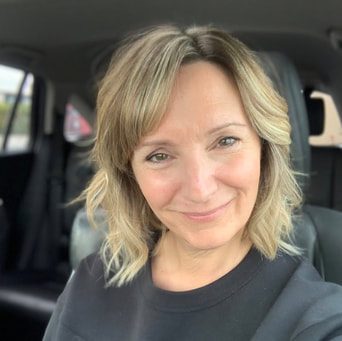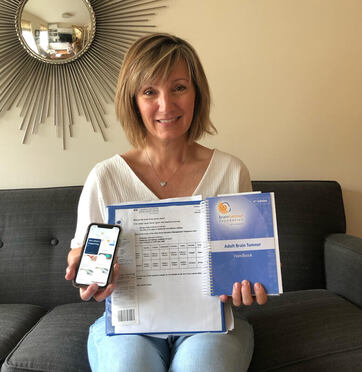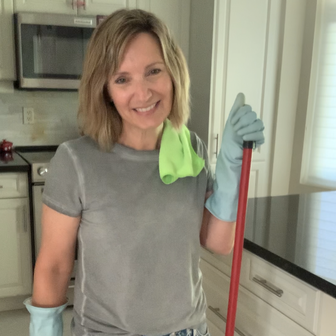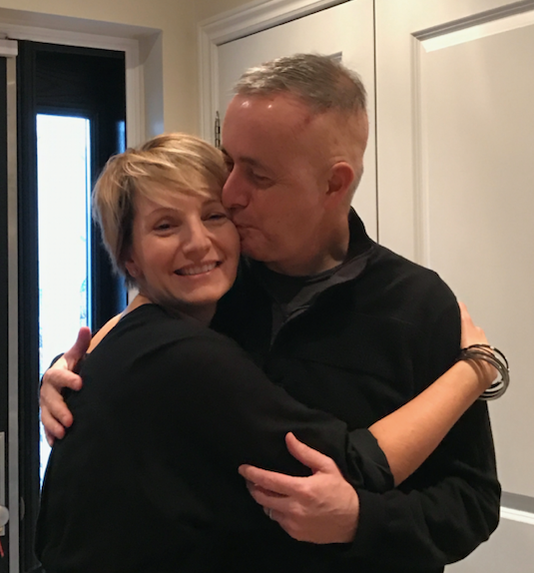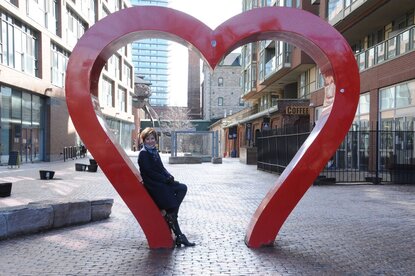|
A friend recently told me about a conversation that she had had with her husband of many years.
"I told him that if he goes before me, that's it for me. I'm not dating ever again." She means well and has applauded my optimism for being in the dating scene. But it also wasn't the first time that I've heard something like it. No one who is currently married and in a happy relationship envisions themselves being out there in the single world again. We all remember what it was like when we were younger. Trust me, it's a lot harder to meet someone now. We know this. But if you've been lucky enough to be have been in a loving relationship once - and that person is no longer alive - you may find yourself at some point wanting to feel those butterflies again. It's been four years since my husband died and we were only 51 years old when it happened to us. Being a young widow and having given myself a few years to process, heal and move forward it was really nerve wracking to build an online dating profile, message back and forth with men who weren't my husband and then take the step to meet in person. Dating after loss is one of the hardest things that a widow can do. I single out widows because I don't have the experience of being separated or divorced which I know is hard too. I've been hugged and high-fived for putting myself out there again. That's the right response when a widow tells you that she's dating again. I'm proud of the strides that I've taken to move forward. Until it happens to you, you have no idea what you will do.
0 Comments
I grew up with somewhat traditional rules around grief.
When a close relative passed away, there was no dancing allowed in the house, no music for a period of time and no hosting of large celebratory occasions like a wedding for a year. Many people of European descent, like my Ukrainian family, can likely identify with what I'm referring to. By the time I was in my early twenties, most of my relatives had died. And over the ensuing decades of my life, I hadn't grieved the loss of someone close to me til my mother-in-law's passing once I was married and already a mother myself. So when my husband was diagnosed with a terminal illness in 2016 at only 47 years of age, he said something to me that I often share with others. He said, "When I die, I want you to be happy and live your life." At the time, Adam was responding positively to treatments for Glioblastoma (GBM), a form of brain cancer. The prognosis for gbm is not favourable with the average life expectancy being only 15 months. Because he was doing well, I scoffed at his statement and told him that he wasn't going anywhere and that he was just being silly. Adam lived til February of 2020 and passed at the age of 51. Prior to his death, and before he lost mental capacity, Adam spoke with me again about his wish for me and the children to not mourn him but move forward in our lives. He gave us that permission which I feel is one of the biggest selfless acts a person can offer to their partner and family. The pandemic occurred only a few weeks following Adam's funeral. During those quiet months, my children and I made plans to eventually travel and get back to our routines like school, work and activities. We were making a life without him, but with him in mind. Even years later, Adam's words have stuck in the back of my mind. And I'll always remain grateful that he has helped us to find our paths forward without him. He has allowed us to laugh, love and live without guilt. And guilt of moving forward is what sometimes holds many widows and widowers back from discovering our next chapters. What an injustice it is for me to meet another widow who hasn't been able to move on from their grief. Is it because their person didn't give them permission to move forward? Hopefully they can come to a point where they can grant it to themselves and embrace exciting moments in their life again. For those who are in a marriage or common law partnership, and haven't told your person that you'd want them to find happiness again after your passing, tell them today. It's a gift that you will give them that they will carry forever. I'm writing about a topic here that I've covered in interviews, articles and in the RESILIENT PEOPLE newsletter. Managing grief over the holidays.
As Father's Day approaches, I'm thinking a lot about two men who were important in my life...my dad and my husband. Both are now gone and I'm thinking about how I'll be feeling this weekend. As with Valentine's Day, Mother's Day, Christmas and my birthday - this last one especially since Adam and I shared the same birthday - these days can bring many complicated emotions across a family. But as time has moved forward, I've learned to cope with these special days much better. Here are some tips:
Days like Father's Day can also bring an opportunity for others to show a little extra love towards a person who is experiencing new grief. They can:
If you're dreading this upcoming Father's Day, I hope that you'll take some time for yourself and do what feels right to you. Some self-care can go a long way. Sending you a big hug, Janet December 6th is my birthday and I will be 54 years old.
It’s a day that I used to celebrate with my husband as we shared the same birthday. Same day. Same year. Until February 2020 when he passed away from brain cancer. Sharing a birthday with a loved one carries with it a double-edged sword. When they are alive, it’s one of the days of the year that you look forward to the most. And when they pass away, it turns into something bittersweet. The thing about grief is that you live with it for the rest of your life. There is no getting around it. You can only learn to accept it and find a way to move forward. Grief is a byproduct of love. Because if we never felt love, we would not grieve. I feel extremely lucky that Adam and I had met, and on our first date talked about our birthdays and astrological signs. As a total skeptic, I can still remember the moment when he produced his driver’s license to prove that we were born on the same day. Stars appeared and I immediately fell for him. Some people never experience love in their lives, while others find it and it slowly disappears over time. Mine was taken away from me, but I still remain grateful for the time we had together. As my third birthday approaches where I am celebrating it without Adam, I will gather with family and spend time with friends. Coming from a line of women who fete their birthdays over weeks, if not months, I will do the same. And celebrate it, I certainly will. One of Adam’s final things he said to me was, “Live your life. Be happy.” Such important words for him to say especially in the last weeks of his life. This birthday, like all of the others, I am reflecting on where I am as well as where I’ve been. And what I’ve learned along the way. Here are some insights that I’d like to share with you:
For over three years I carried around an ugly navy binder to every appointment.
It was filled with articles, business cards, pamphlets, notes, and even parking receipts. By the end of my husband’s brain cancer journey, it was bursting at the seams, heavy and barely able to close. But this binder brought me comfort, knowledge and hope during a time that was very bleak. Back in 2016, my husband Adam Fanaki was diagnosed with terminal brain cancer. He was 47 years old, a practising lawyer and leading a healthy life until he was told that he had glioblastoma. The following two weeks would be a whirlwind for us. For anyone who has been diagnosed with a terminal illness, every second feels like life or death. We were fighting for the former. Adam and I contacted every healthcare worker, colleague in medicine and anyone who could point us in the right direction. That direction was called optimism. We read every paper and article on GBM. We watched many Youtube videos from experts on the disease. All the while fielding calls, emails and texts from family and friends on how they could help as well as parenting our two children who were in grades 9 and 12 at the time. There was no balance. It was all about making it from one day to the next, but any help that came our way was welcomed graciously. One of these ways came in the Neurosurgery ICU at St. Michael’s Hospital following Adam’s craniotomy. Watching him sleep peacefully, with his head in 47 staples and bandaged up, a nurse came in and handed me a copy of the Adult Brain Tumour Handbook from the Brain Tumour Foundation of Canada. It would become my go-to resource for everything related to Adam’s brain cancer journey. I read it cover to cover. Although it didn’t take the place of my binder, it did serve as a more portable resource for me. Flash forward to 2022 and it has been over two years since we lost Adam. At that time we established The Adam Fanaki Brain Fund to support charities like the Brain Tumour Foundation of Canada in their efforts to help patients and their caregivers. Our vision has been to help relieve some of the stress in living with a brain tumour. To date, we are proud to say that we have funded numerous programs and services including a new initiative at the Brain Tumour Foundation of Canada. This year they reached an important milestone when they launched a new digital app, making their essential handbooks available across different platforms and to people with varying needs. Now users can access the handbooks as well as support chats on their smartphones and tablets in accessible formats. Information for both adults and children living with a brain tumour is available. As this tool continues to expand, it will offer more and more resources to help patients and their caregivers. Making this app possible for people affected by brain tumours, giving to others, and the fundraising that makes it all possible has allowed our family to heal and move forward. We are grateful to the hundreds of donors who have supported us including Canadian business leaders such as our lead donor Davies Ward Phillips and Vineberg LLP. The Adam Fanaki Brain Fund is honoured to be able to give back to this community. Today I let my hair naturally dry, looking a little messy in that beachy kind of way.
I’m wearing my worn denim shorts, an old t-shirt and bare feet in the house. Hall & Oates is playing on the record player. The rubber gloves are on, furniture is pushed into different rooms, my pail is full of hot water and lemon cleaner. After vacuuming the house I’m now getting ready to wash the floors and I’m stoked about it. Today is feeling very special. The days that I do a big clean on my house I feel extra happy. I feel like cleaning is one of the unsung heroes in the world of maintaining mental health. When I clean I don’t think much about my problems or why I didn’t sleep well the night before. All I’m thinking about is what I’m doing at that moment. Dragging the vacuum across the floor and carrying it up and down stairs. Going from one room to the next on a mission to suck up every dust bunny and stray hair. And then moving to mopping takes it to the next level. Just when I thought that my floor was clean enough from “Hoovering” all around, I start dunking my mop. With every submerge into the soapy steamy water, seeing it get browner and dirtier, my heart begins to flutter. Progress. That’s how I look at cleaning. Progressing from a state of living in dust and grime to lightness of being. That clean smell and looking around at the shine is pure delight. When I was growing up, cleaning was a daily occurrence in my mother’s house. I would help my mom pick specs of lint off of the living room rug, “Windex” the windows and shake out the bedside carpets. And it didn’t feel like a chore. I felt like I was contributing to the system. Nowadays it’s become too easy to outsource our home maintenance. Something that I never heard about growing up. But when my children were small I had such a person. She is wonderful and still a close part of our family. But as time went on and our family grew, I started to miss doing the household chores and teaching my own kids the value in taking care of their home. I may be overstating my love for cleaning but I really do feel that doing it myself brings me a bigger sense of satisfaction and happiness. Later I’ll tackle some weeds outside and water the garden. Why limit myself to just the indoors, right? And then I’ll grab a cold drink, sit on the back deck and smile at everything I’ve accomplished. That feels good. Like any other special day in the year, Father’s Day can be both happy and terribly sad for many people.
Losing one’s dad, husband or child can make this day very difficult to navigate alone. In February 2020, I lost my husband Adam to brain cancer. He was 51 years old, the father to our two children Isobel and Sam, enjoyed a thriving practice as a respected lawyer, colleague and friend to many around the world. Father’s Day continues to be a tricky one for me to navigate. The first year without him was really hard. The kids and I have had to learn to manage the special days of the year in new ways. There are many people around the globe who are missing their special someone. War, disease, estrangement or divorce are just a few examples. I have learned to cope with special days of the year like Father's Day. It doesn't make it better, but it does make it easier. Here are some of the things that have helped me and could help you:
If you're having a hard time as Father's Day approaches, you are not alone. Please let others know how you are feeling and let them do something nice for you. It will help to build your resilience while also making them feel good too. Valentine’s Day can be a minefield when you are living single. On February 15, 2020 my husband of 22 years passed away. Despite this sad chapter in my life, it hasn’t stopped me from celebrating love in all its forms. As a widow for four years, I've learned a thing or two about managing the "trigger" days and this is a big one. I'm here to offer the single people a bit of advice on how to get through what can be a very annoying day of the year. Nowadays we could all describe the world that we live in as unpredictable, ridiculous and in many cases very sad. We need to find ways to bring levity and joy into our lives so use Valentine's Day as the excuse. Turn the narrative about this day being just about couples on its head and celebrate the love that you have for friends, family, pets and anyone else significant in your life. You don’t need to spend a lot of money or effort. Here are some simple ideas:
For me, I'll be gathering with a group of single friends at a very fun restaurant. Everyone attending has said that we'll likely have more fun than many couples will that night. Lastly, to avoid all of the pitfalls that come with the triggers around February 14th, limit your time on social media and the tv. They are full of commercials and programs about romance which you'd rather miss. However you spend it, give yourself some grace in moving through it as you see fit. For many people, it's just another day in the calendar. by Janet Fanaki
I just watched the tenth and final episode of ‘And Just Like That’. Like most fans of Sex And The City, I was skeptical about watching this reboot. Would it measure up to my perfect ideal of the original? Could it even come close? For over 23 years I have stood by Carrie, Miranda, Charlotte and Samantha. My late husband Adam and I started watching the show in the late 1990s and likely saw every episode at least once. SATC signified a timestamp in my life. A time in the 90s and early 2000s when Adam and I were newly married, eyes were on the career track, regularly meeting friends for dinners and drinks, attending first weddings and searching for the perfect place to call home. Sounds like any given SATC episode. Even years later when babies started arriving, dinner dates became leftovers at the kitchen island and marriages were ending in divorce, this series still held up because our previous lives weren’t that much of a distant memory yet. But flash forward to being in my 50s, similar to the cast of AJLT, and I can intimately relate to at least one of the characters on the show. Carrie. Only two years ago I lost my Adam. Far too young and very comfortable in the prime of our lives. By now nearly everyone is familiar with what happens in episode one. Big dies. If you were watching it when the series was first released, you were like everyone else and didn’t see this plot twist coming. Before I even had the chance to watch it, my friend Jane called to warn me about it. “No spoiler,” she said, “but Big dies and it’s pretty horrible. You may want to skip to episode 3.” God bless Jane! Every widow needs a friend like her to send up the warning shots. A very SATC characteristic for sure. Against Jane’s advice though, I watched the first as well as all of the episodes that followed it. The first two were really hard because they showed Carrie moving through the days and nights of immediate grief. I was like her in the early days of loss with the feelings of confusion, anger, tears and sleeplessness nights while she planned a funeral and tried to understand in the remaining episodes where she fits in this life again. Sarah Jessica Parker depicts life as a new widow pretty accurately — at least in my experience. So much happens in Carrie’s journey that mirrored my own. For example:
Naming this final episode, “Seeing The Light” was just how I felt watching it. Once she was able to put some big things behind her, Carrie was able to make a clear path forward for herself, and move into her next exciting chapter. Janet Fanaki is the host of the RESILIENT PEOPLE podcast. She talks with regular people who have lived through a major life challenge, found a purpose from it and now help others to be resilient too. She lives in Toronto with her adult children. Another Christmas is now behind us. With all of the presents handed out, you may want to snag something just for yourself.
Boxing Day shopping is here but what's your game plan? I like to approach shopping - especially on Boxing Day - with a level of preparedness. Here are some ways to hit the malls and still come away happy without losing your mind. What's in your wallet? I learned from financial planning expert, Doris Belland, that it's really important to know our spending habits and be familiar with how much we're walking around with in our wallets. Even if its a virtual one. Christmas is an expensive time of year so don't spend more on Boxing Day unless you know you can. Dress code in effect As I've gotten older I've learned that its super important to factor in your dress code when walking the porcelain tiles and heated halls of the mall. Only wear a lightweight coat or sweater since they'll just get you hotter than you need to be, comfortable sneakers and leave the hat and gloves in the car because its one less thing to carry or lose. Park at the end of the lot I'm a big fan of parking far away from the mall's entrance. It's good for many reasons: you won't be fighting anyone for the spot, gives you a little more time in fresh air and pulling out of your space to drive away is less busy and just easier. Don't weigh me down Wear a crossbody bag or stylish fanny pack. You want to be handsfree especially if you're walking into the mall with a lot of returns or coming out with a big score. Snack attack Whether I'm in the car doing errands or on transit heading into town for a shopping trip I always pack a snack. The ones I favour are: nuts, a banana or Sesame Snaps because they're easy to eat on the go and tide my hunger over. Pack your patience Have fun with it The term 'hit the ground running' might be okay for race time, but you've already been going full steam ahead to prepare for Christmas and the holidays for weeks. Treat Boxing Day as a pleasure and not as a challenge. Walk slowly. Really take-in the sparkly decorations that the mall designers worked hard to create for all of us. Stop when you need to and take a break. Enjoy the day. And good luck. Janet Fanaki is the creator of RESILIENT PEOPLE, a podcast and website which features conversations with regular but EXTRAordinary people around the world admired for their resilience. She lives in Toronto. |
Proudly powered by Weebly
